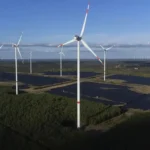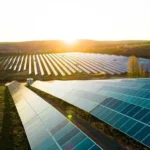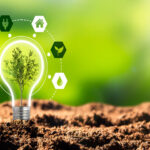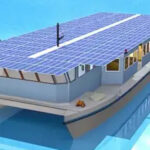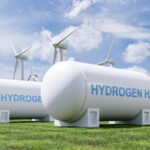Distributed Renewable Energy in India: Challenges, Opportunities & Impact
India’s energy landscape is undergoing a transformative shift. As the country continues its journey toward sustainable development, renewable energy distribution in India is becoming a critical component of this evolution. One particular area gaining traction is distributed renewable energy (DRE) — a system of power generation that brings energy closer to the point of consumption. This decentralized approach is not only improving access to electricity but also reducing dependence on fossil fuels and centralized grids.
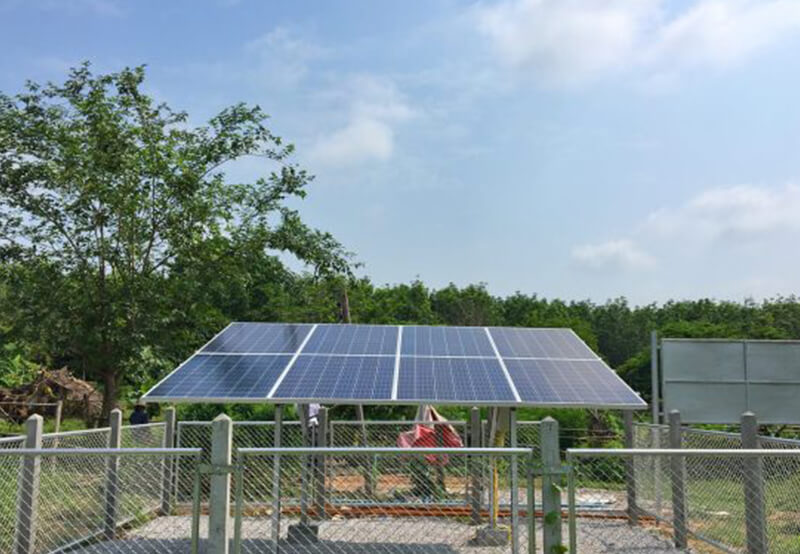
In this blog, we’ll explore the current state of power generation, transmission, and distribution in India, analyze the growing importance of distributed renewable energy resources, and examine the challenges, opportunities, and overall impact of renewable energy and distributed generation systems in the country.
What is Distributed Renewable Energy (DRE)?
Distributed Renewable Energy (DRE) refers to small-scale power generation technologies, often using renewable sources like solar, wind, biomass, or small hydro, that are located close to the point of use — homes, businesses, and communities. Unlike large, centralized power plants, DRE systems generate electricity locally and typically function either independently or in conjunction with the main grid.
Examples of distributed energy solutions include:
- Rooftop solar panels
- Microgrids
- Solar-powered irrigation systems
- Wind turbines for rural electrification
- Biomass-powered community grids
This model is especially relevant for a vast and diverse country like India, where access to centralized electricity remains limited in some regions, particularly rural and remote areas.
Current Landscape of Renewable Energy Distribution in India
India is the world’s third-largest producer of renewable energy. As of 2024, the country boasts over 125 GW of renewable capacity, with ambitious plans to achieve 500 GW by 2030. However, despite this growth, the distribution infrastructure faces several challenges.
Traditionally, power generation, transmission, and distribution in India has been dominated by centralized coal-powered plants and national grids. These systems, while effective in urban centers, often fall short in remote or rural areas where infrastructure is poor, terrain is difficult, or grid extension is economically unviable.
This is where distributed renewable energy resources play a pivotal role. They offer flexibility, faster deployment, and the ability to cater to specific local needs without relying entirely on centralized transmission systems.
Challenges in Distributed Renewable Energy Adoption
Despite its many benefits, renewable energy and distributed generation systems face a variety of challenges in India. These include:
1. Policy and Regulatory Hurdles
While the government has introduced several policies to encourage DRE, regulatory inconsistencies across states hinder nationwide adoption. Varying net metering policies, lack of clarity on open access for small generators, and complex approval processes slow down deployment.
2. Financing and Investment Issues
The upfront costs of setting up DRE systems can be high, especially for rural communities or small businesses. Although subsidies and financing options exist, access to credit remains a barrier. Investors are often hesitant due to perceived risks in returns from small-scale renewable projects.
3. Grid Integration and Management
Integrating DRE systems into the existing grid infrastructure can be challenging. The variability of renewable energy sources like solar and wind demands smart grid solutions and robust grid management, which are still underdeveloped in many parts of India.
4. Lack of Awareness and Technical Expertise
In rural areas, awareness about distributed energy solutions is still low. Additionally, the technical skills required for installation, operation, and maintenance of DRE systems are not always available locally, affecting system reliability and long-term sustainability.
5. Land Acquisition and Permitting
For certain distributed solutions like community solar farms or biomass plants, acquiring land and permits can be cumbersome. Lengthy bureaucratic procedures discourage faster project execution.
Opportunities for Distributed Renewable Energy in India
While the challenges are real, so are the opportunities. Distributed renewable energy has the potential to revolutionize the way India meets its energy demands, especially in the following ways:
1. Energy Access and Rural Electrification
DRE can bridge the gap in regions where traditional grid connectivity is not feasible. In fact, decentralized systems are often the most cost-effective way to bring electricity to remote villages, ensuring energy equity and empowering local communities.
2. Job Creation and Skill Development
The DRE sector is labor-intensive and offers employment opportunities in manufacturing, installation, operations, and maintenance. According to industry estimates, the renewable sector in India could create over 1 million jobs by 2030, a significant portion of which would come from distributed systems.
3. Climate Resilience and Sustainability
By reducing dependence on fossil fuels and centralized grids, distributed renewable energy resources contribute to lower carbon emissions, reduced transmission losses, and greater climate resilience. This aligns with India’s Nationally Determined Contributions (NDCs) under the Paris Agreement.
4. Support for Agricultural Productivity
Solar pumps and microgrids are transforming India’s agricultural sector. They provide reliable power for irrigation, cold storage, and processing, leading to improved yields and reduced input costs for farmers.
5. Innovation and Tech Advancement
India is home to a growing number of startups and innovators working in the renewable energy space. From smart meters to AI-driven microgrid management, technology is making renewable energy and distributed generation more efficient, scalable, and accessible.
Impact of Distributed Renewable Energy on India’s Power Ecosystem
1. Decentralized Power Generation
DRE is reducing the burden on centralized grids and fossil-fuel-based power plants. As more households and enterprises generate their own electricity, the national grid becomes more stable and less prone to blackouts.
2. Cost Savings and Efficiency
With rising electricity tariffs and fuel costs, distributed systems — particularly solar — are becoming more cost-effective. Rooftop solar installations, for instance, now offer competitive tariffs compared to grid electricity in many Indian cities.
3. Empowerment of Marginalized Communities
Access to energy is directly linked to improvements in health, education, and income. DRE is helping tribal villages, hill communities, and underserved regions overcome energy poverty and improve their standard of living.
4. Resilience Against Disasters
During natural disasters like floods or cyclones, centralized grids often fail. Decentralized systems, especially those with battery storage, can continue to operate independently and supply essential power to hospitals, schools, and homes.
5. Increased Private Sector Participation
The DRE sector is attracting both domestic and foreign investment. With clear policy signals and incentives, companies are expanding their footprint in rooftop solar, microgrids, and hybrid energy systems.
Government Initiatives Supporting DRE
India has launched several policies and schemes to support renewable energy distribution in India, including:
- PM-KUSUM Scheme: Aims to install solar-powered irrigation pumps and grid-connected renewable power plants in rural areas.
- Saubhagya Scheme: Focused on household electrification across the country.
- National Solar Mission: Promotes solar power generation, including rooftop solar and off-grid applications.
- UDAY Scheme: Seeks to improve the financial health of DISCOMs, enabling better grid infrastructure and DRE integration.
State governments are also coming forward with incentives, subsidies, and pilot programs to support decentralized power solutions.
Future Outlook: Scaling Distributed Renewable Energy in India
The future of power generation, transmission, and distribution in India is increasingly distributed, decentralized, and decarbonized. Here’s what lies ahead:
- Digital Transformation: Smart grids, IoT devices, and AI will optimize the performance of distributed systems.
- Storage Solutions: With battery costs dropping, storage technologies will complement DRE by addressing the intermittency of renewables.
- Public-Private Partnerships: Collaboration between government bodies, NGOs, and private enterprises will accelerate DRE adoption.
- Community Participation: People-centric models like community solar or cooperatives will ensure local ownership and sustainability.
To realize the full potential of distributed energy solutions, India must focus on building a supportive ecosystem — combining policy reform, financial innovation, technical training, and public awareness.
Conclusion
Distributed renewable energy in India is not just a technological shift — it’s a social and economic transformation. From lighting up rural homes to powering sustainable businesses, DRE is paving the way for an inclusive and resilient energy future. As the country moves toward its renewable energy goals, the focus must remain on decentralization, innovation, and equitable access.
The convergence of renewable energy and distributed generation will redefine the way electricity is produced, consumed, and shared — bringing India closer to energy security, environmental sustainability, and economic prosperity.
Frequently Asked Questions (FAQs)
1. What is distributed renewable energy in India?
Distributed renewable energy (DRE) in India refers to small-scale power generation systems using renewable sources like solar, wind, and biomass, located close to the point of use. These systems are often used in rural or remote areas where traditional grid access is limited or unreliable.
2. How does distributed renewable energy differ from centralized power generation?
Centralized power generation involves large-scale power plants transmitting electricity over long distances through the grid. In contrast, distributed renewable energy systems generate power near the point of consumption, reducing transmission losses and increasing reliability.
3. Why is distributed renewable energy important for India?
Distributed renewable energy is vital for enhancing energy access in rural areas, reducing carbon emissions, supporting agricultural productivity, and promoting decentralized development. It also plays a key role in India’s transition to clean energy.
4. What are the main challenges in renewable energy distribution in India?
Key challenges include regulatory hurdles, financing issues, grid integration, lack of technical awareness, and difficulties in land acquisition and permitting for distributed energy solutions.
5. What government schemes support distributed renewable energy in India?
Major schemes include:
- PM-KUSUM for solar pumps and decentralized solar plants
- Saubhagya for rural electrification
- National Solar Mission for promoting solar energy
- UDAY for improving DISCOM performance



